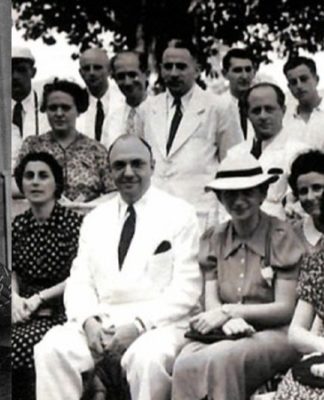THE BALLOONING budget for research has prompted a move to streamline the University’s research centers, with no less than the new Rector calling for a leaner organization and for research outputs that can be patented, commercialized, and used to help Filipinos cope with the hard times.
A seven-man review committee has been formed to study whether some of the research centers should be abolished or merged, officials told the Varsitarian.
“The end result of the study of the restructuring of research in the University will be less centers,” said Fortunato Sevilla III, assistant to the rector for research and development, adding that despite the reorganization, research will continue during the transition period.
The University spends P60 million to P80 million every year for research, covering salaries, research materials, and maintenance of the Thomas Aquinas Research Complex, which houses almost all of UST’s research units, Rector Fr. Rolando de la Rosa, O.P. said in an interview.
The University has 10 research centers, exceeding the five flagship research areas: Arts and Humanities, Ecclesiastical Sciences, Health Sciences, Science and Technology, and Social Science and Education.
The research centers have been temporarily placed under two research clusters: the natural and applied sciences cluster and the cultural, educational, social, and pastoral cluster.
The first cluster is headed by Prof. Christina Binag of the College of Science while the second cluster is under Asst. Prof. Alvin Ang of the Faculty of Arts and Letters.
The review committee is headed by Graduate School Dean Lilian Sison and composed of Sevilla, Prof. Marilyn Mabini, Vice-Rector for Academic Affairs Clarita Carillo, Engineering Regent Fr. Arthur Dingel, O.P., Assistant to the Rector for Planning and Development Pilar Romero, and Human Resource Director Cecilia Bahrami-Hessari.
To avoid personnel displacement as a result of the overhaul, the Human Resource Department has begun transferring the centers’ support staff to different administrative offices in the University.
Meanwhile, the archival materials of the John Paul II Research Center for Ecclesiastical Sciences are being transferred to the former Center for Ethics on first floor of the research complex.
The University has funded 841 out of the targeted 910 research projects since academic year 2002-2003, according to the Rector’s Report 2007-2008. A total of 215 research works are supposed to be completed this academic year, and the number will go up to 282 in 2010.
Only around 150 faculty members are involved in research out of more than 1,500.
The Rector said that university researchers should produce outputs that can be patented or mass-produced, and possibly “help our countrymen cope with the economic crisis the nation is experiencing.”
An example is the method of extracting oil from jathropa seeds, an alternative fuel, which was developed in UST. The University had also developed medical products from Tonkin seed, he noted.
“As of now, most of our researchers, after having their research, they only go to the extent of publishing it,” De la Rosa told the Varsitarian. They do not create products or inventions that can be patented.”
The Rector also said researchers should produce studies in support of UST’s advocacies and help the University in decision-making, such as how many students to admit, faculty members to hire, or classrooms to be provided.
The centers that will undergo streamlining are the Office for Research and Development, Center for Ethics, Center for Conservation of Cultural Property and Environment in the Tropics, Center for Creative Writing and Studies, Center for Educational Research and Development, Center for Intercultural Studies, John Paul II Research Center for Ecclesiastical Sciences, Research Center for Natural Sciences, Research Center for Movement Science, and the Social Research Center.
Sought for comment, Center for Creative Writing and Studies Director Ophelia Dimalanta said she was open to the review but it would be better for the 10-year-old writing center to be autonomous.
“Right now, the center seems like in limbo. There are works that were put to halt like the (annual writers’) workshop,” Dimalanta added.
The former AB dean pointed out that the writing center is not entirely a research center but a creative one, for “it does not deal with strict research or statistics or technicalities.”
“We feel like we will be straight-jacketed (by) some policies not applicable to us. Our output is totally different in nature compared to other centers,” Dimalanta said. Aura Marie P. Dagcutan with reports from John Constantine G. Cordon












